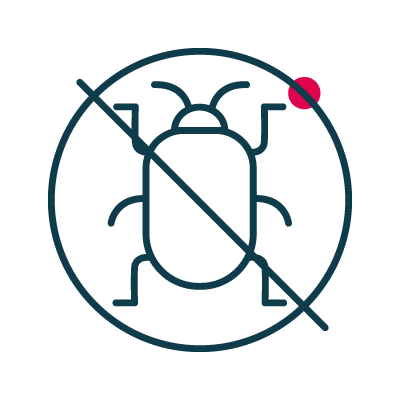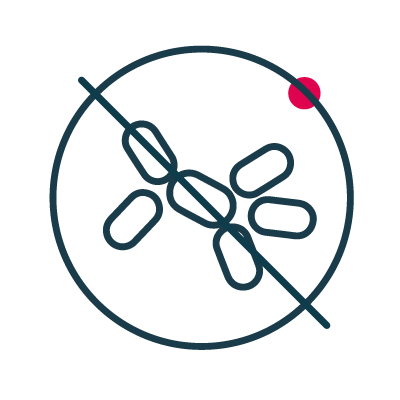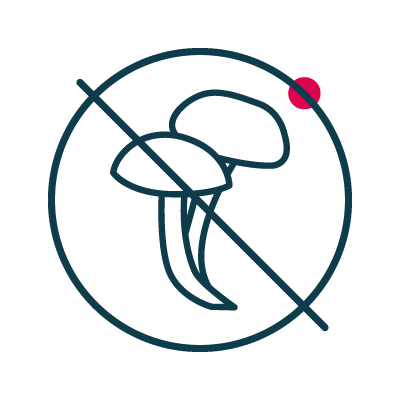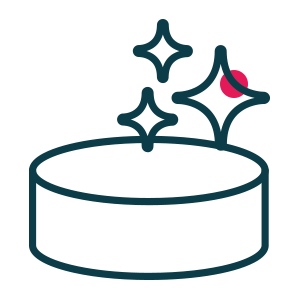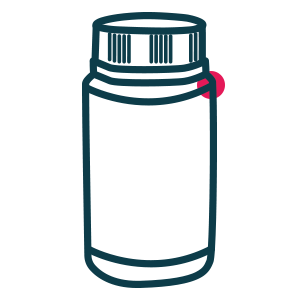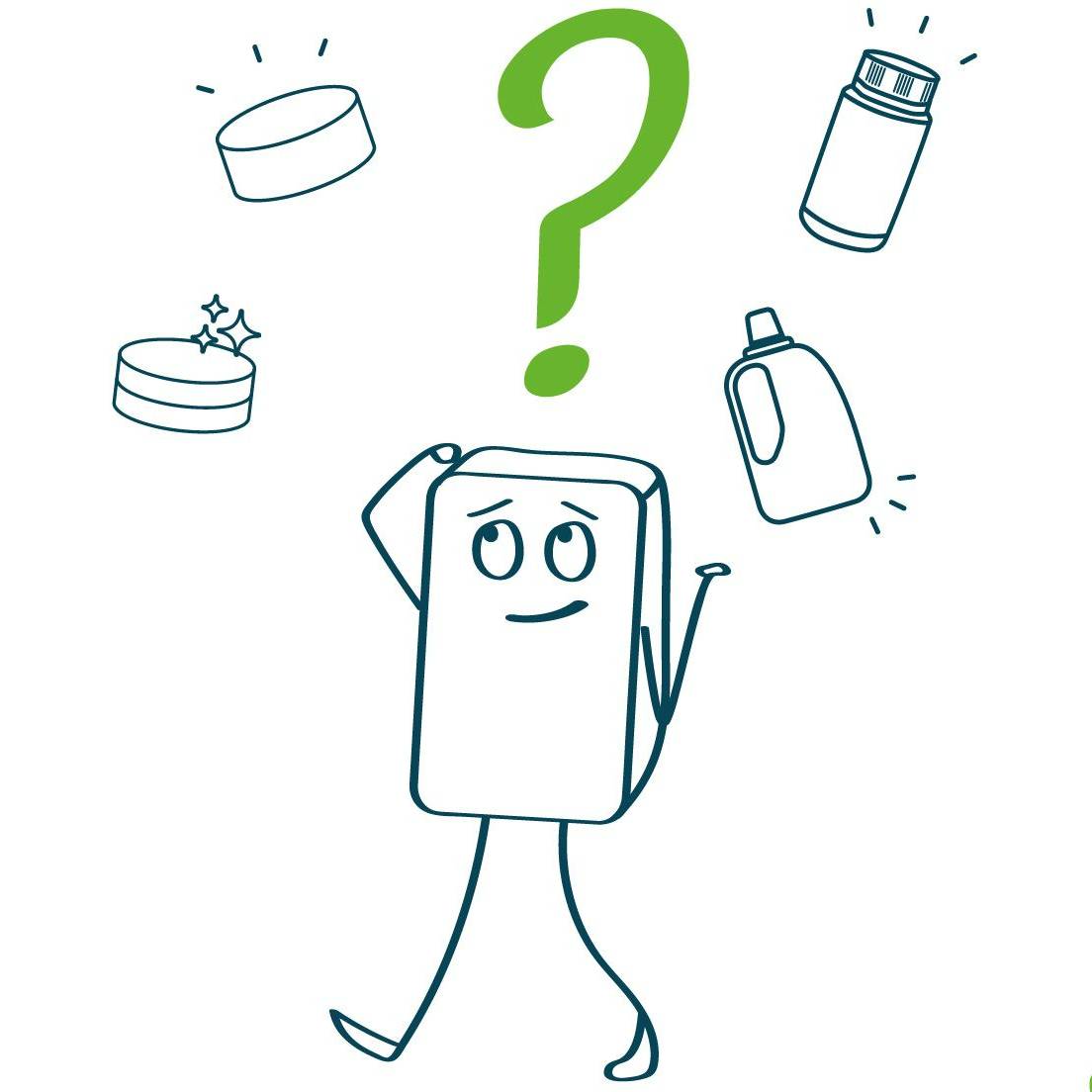
everything about bleach
> What is the origin of bleach?

what is THE ORIGIN OF bleach?
Invented in the 18th century by the Frenchman Claude Louis Berthollet, bleach took its name from the old village called Javel, located in Paris (now part of the 15th arrondissement).
Bleach was originally developed to help bleach laundry. It was adopted by washerwomen who found it to be a miracle product.
Its success was rapid, but it was only later that it was discovered to have other properties. In the 19th century, it was widely used as a disinfectant and to treat drinking water.
Today, bleach is available in liquid (bottles) or solid (tablets) form, Eurotab's flagship product since 1957.
What's the difference between bleach and chlorine?
Chlorine is a chemical element, whereas bleach is a chemical product that contains chlorine atoms.
In chemical terms, we use sodium dichloroisocyanurate (or NaDCC) in our chlorine formulas: it is therefore a chemical molecule containing chlorine atoms. Bleach, for its part, is a solution containing sodium hypochlorite (Na+ ClO-): it also contains chlorine atoms, present in the form of hypochlorous ion ClO-, responsible for the whitening power.
In fact, in the presence of water, NaDCC hydrolyses and releases a molecule of hypochlorous acid (HClO), which is responsible for disinfection. Depending on the pH, an acid-base equilibrium converts the chemical species HClO into the hypochlorite ion ClO-.
This is why bleach has historically been used for its bleaching power (ClO- species in solution), whereas chlorine is used for its disinfecting power (HClO species released when DCCNa comes into contact with water at acid pH).
In short, bleach is most effective for whitening, while chlorine in the form of NaDCC is preferred for disinfecting.

WHAT ARE BLEACH TABLETS?
Bleach tablets are produced from a compacted concentrated powder containing sodium dichloroisocyanurate (or NaDCC). NaDCC is a biocidal active substance, also known as chlorine.
It is a powerful disinfectant that kills all bacteria, viruses and fungi, according to European standards:
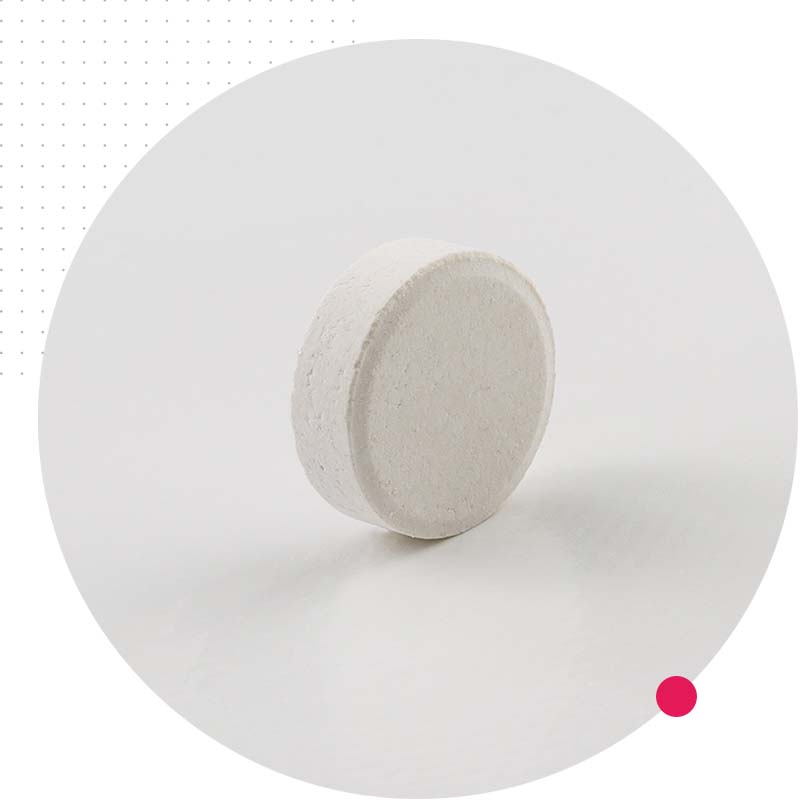
Bactericide
KILLS BACTERIA
(EN 1276: suspension bactericide)
VIRUCIDE
KILLS VIRUSES
(EN 14476, surface virucide)
FUNGICIDE
KILLS FUNGI
(EN 13697: surface bactericide and fungicide)
NaDCC tablets are stable for at least 2 years and do not lose active chlorine over time, compared with liquid bleach (3 months).

THE BLEACH TABLET, A PERFECT FORMAT FOR DISINFECTING
Bleach tablets are used to whiten, stain, deodorize and disinfect floors, surfaces, white linen, toilets, kitchen utensils, bathrooms, dustbins, pet litter and much more!
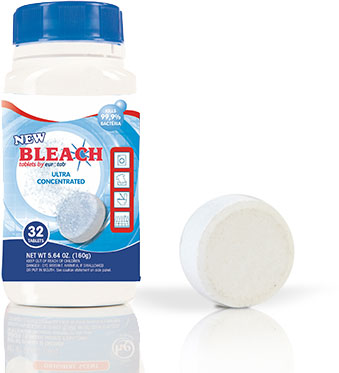
EFFECTIVE
- Kills 99.99% of germs
- Disinfects the whole house: surfaces, floors and toilets
SAFE
- pH neutral (1)
- do not drip, no risk of splashing
- long shelf life
- less waste and less plastic: one jar of 48 bleach tablets is equivalent to 230L of disinfectant solution (according to EN 13697, cleanliness with an 80% formula of 3.35g)
(1) depends on the formula.
PRACTICAL
- pre-dosed: easy dosage: 1 to 2 tablet(s) depending on use
- fast dissolving
- very compact and easy to store

OUR SOLUTIONS FOR DISINFECTING
-%20rond.jpg)
Eurotab, your solid format expert, designs and manufactures bleach tablets in a dedicated production site, exclusively for your brand, with customer references on all five continents.

SPECIFIC COVID-19
IS BLEACH EFFECTIVE AGAINST THE CORONAVIRUS?
Yes, in the correct dosage, the bleach tablet is effective in killing the virus.
HOW TO USE BLEACH EFFECTIVELY AGAINST COVID-19?
In accordance with the guidelines of the International Health Authorities, here are our recommendations for effective disinfection of floors and surfaces :
1. Surfaces should be cleaned with soap and water or your usual detergent first;
2. Dissolve 1 tablet of bleach in 20 litres of water at 20°C;
3. Once diluted, apply the disinfectant solution to the surface or mop the floor;
4. Leave for 5 minutes and then rinse with clean water;
5. Wash your hands after each use.
The solution should be reapplied every 3 days to destroy the Covid-19 virus and limit its spread.
Bleach is suitable for disinfecting inert surfaces. Do not use on hands, body or animals. Never mix bleach with any other active substance, especially descalers or unblockers.




